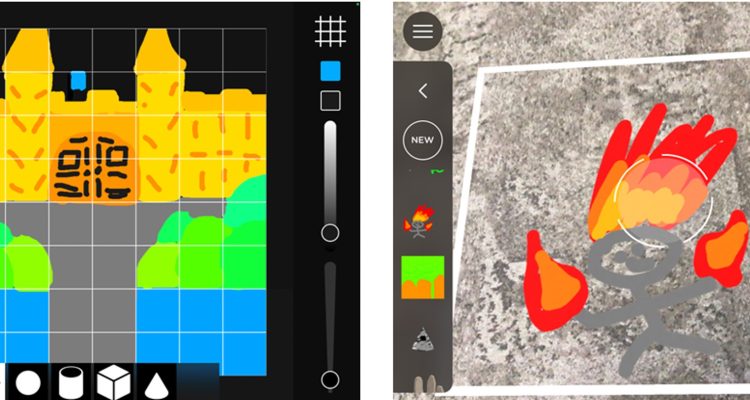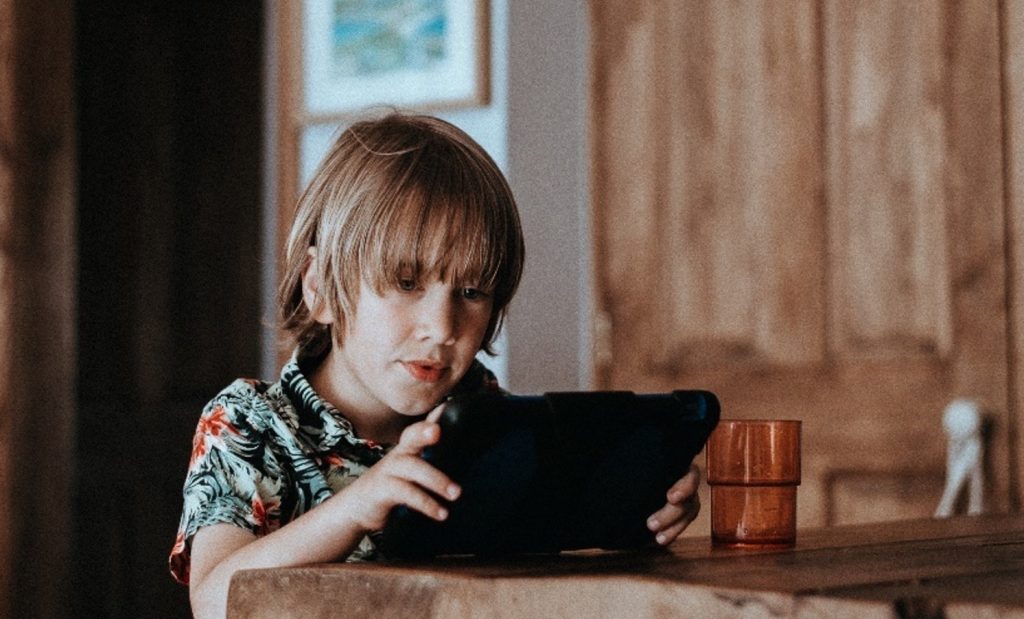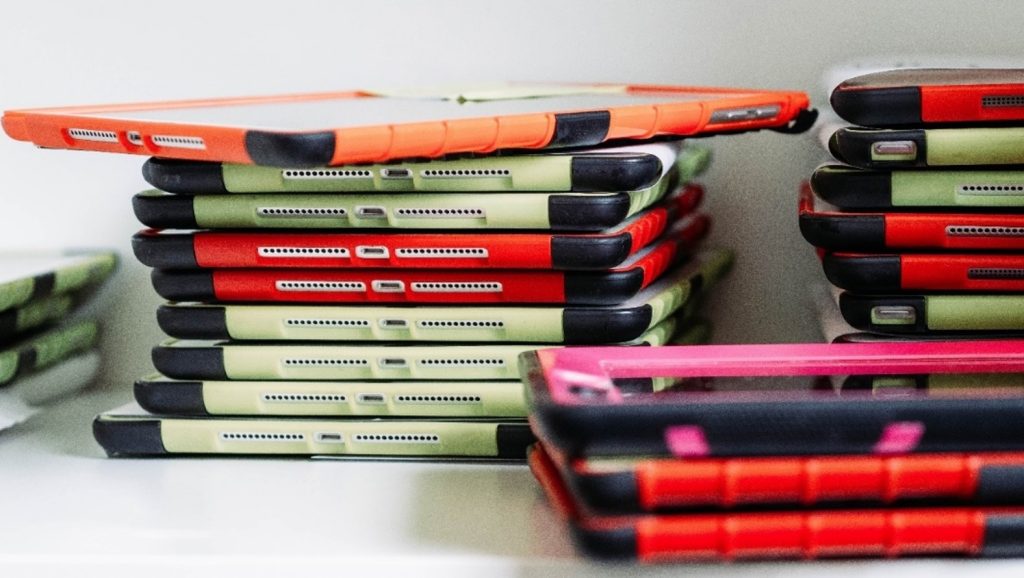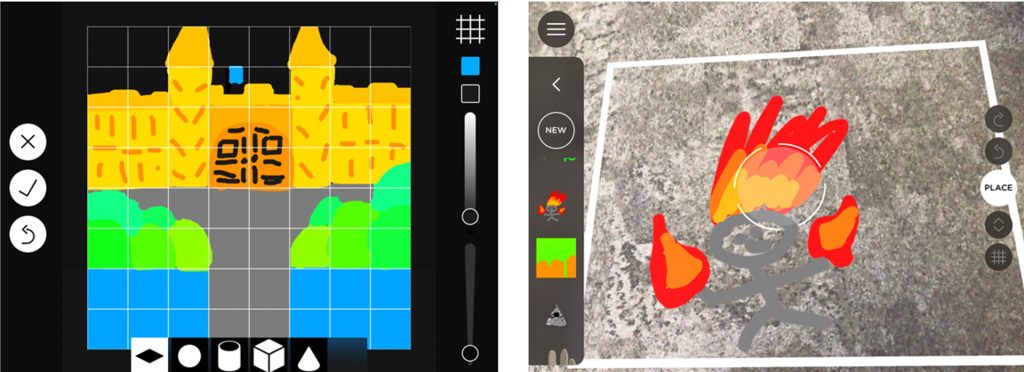
Augmented Reality: Storytelling and scene composition
In our latest phase of the ‘Sensory Orchestration’ research project, we delved into the world of Augmented Reality (AR) to investigate its role in engaging students within the possibilities of multimodal learning. This portion of our study focused on students aged 11 to 16, from grades 6 to 10. In this blog post, we will provide a background into AR-based research during our fieldwork.
Recent research has highlighted the significant impact of augmented reality (AR) technology on student engagement, particularly in the context of reading and comprehension. Cheng (2017), for instance, notes the remarkable potential of AR-based books in bridging the divide between the physical and the virtual. As a result, this significantly enhances readers’ understanding of book content, especially when tackling detailed and abstract concepts. Cheng (2017) also examines the concept of ‘cognitive load’ within AR reading environments, suggesting that students find it less mentally taxing to process information through AR books.
 Photo by Annie Spratt on Unsplash
Photo by Annie Spratt on Unsplash
The utilisation of augmented reality (AR) technology suggests numerous benefits in the field of education. A comprehensive review conducted by Akçayır and Akçayır (2017) highlighted how AR not only contributes to improved learning outcomes but also ignites student motivation, fosters investigative skills, and facilitates real-world exploration. Furthermore, a quantitative analysis of the data presented in Garzón et al.’s (2019) review notes that AR has a moderately significant impact on the effectiveness of learning. Perhaps most notably, the incorporation of AR in education consistently results in more seamless learning experiences, as reported by the students themselves.
 Photo by Arthur Lambillotte on Unsplash
Photo by Arthur Lambillotte on Unsplash
Multimodal composition with AR
During the fieldwork phase of our research, the team ventured into the world of augmented reality (AR) through the use of two readily available AR applications designed for iPads. The first of these, and the focus of this post, is the AR Makr app. AR Makr opened up many creative possibilities for our students. This app empowered students to sketch, scan, and capture images, which could then be transformed into captivating 2D and 3D virtual objects. Once their artistic work was complete, it could be recorded, saved, and shared with their peers. One of the most exciting aspects of the AR Makr app was its potential to enhance classroom activities. Students could select scenes from stories they had previously crafted in class and elevate them to a new level by crafting multimodal compositions. The app offered a variety of options for importing images. Students could either draw directly onto the screen space using the iPad and create hand-drawn images within the app (Figure 1). They could also access online resources and import them, or even incorporate images captured with digital cameras.
 Figure 1. An example of students’ in-app drawings. The left image drafted in the drawing grid, and the right as overlay in real world surroundings.
Figure 1. An example of students’ in-app drawings. The left image drafted in the drawing grid, and the right as overlay in real world surroundings.
Through AR Makr, students could infuse their narratives with rich sensory experiences and layer their stories, creating a learning journey that was not only immersive but also memorable. More about this field work will be available in our final project report, Senses Together – Multimodal Literacy Learning in Primary Education: Final Project Report (Mills, Heck, Brown, & Funnell, forthcoming).
References
Akçayır, M., & Akçayır, G. (2017). Advantages and challenges associated with augmented reality for education: A systematic review of the literature. Educational Research Review, 20, 1–11. https://doi.org/10.1016/j.edurev.2016.11.002
Cheng, K. H. (2017). Reading an augmented reality book: An exploration of learners’ cognitive load, motivation, and attitudes. Australasian Journal of Educational Technology, 33(4). https://doi.org/10.14742/ajet.2820
Garzón, J., Pavón, J., & Baldiris, S. (2019). Systematic review and meta-analysis of augmented reality in educational settings. Virtual Reality, 23(4), 447–459. https://doi.org/10.1007/s10055-019-00379-9
Mills, K., Heck, E., Brown, A., & Funnell, P. (forthcoming). Senses Together – Multimodal Literacy Learning in Primary Education: Final Project Report. ARC Future Fellowship. Institute for Learning Sciences and Teacher Education Australian Catholic University.
